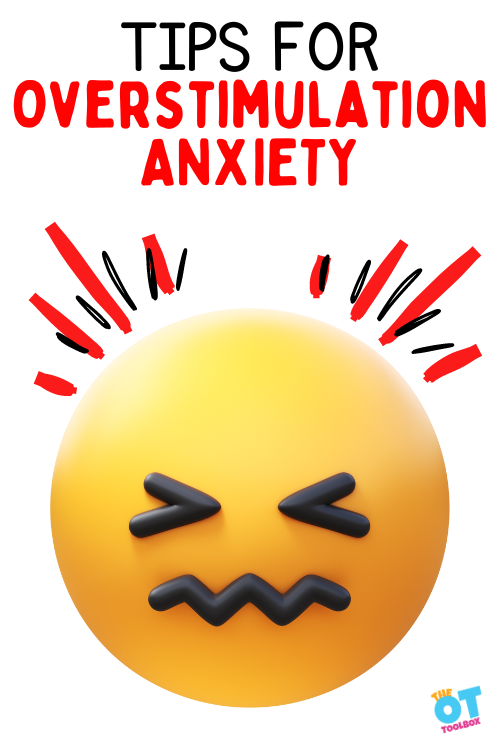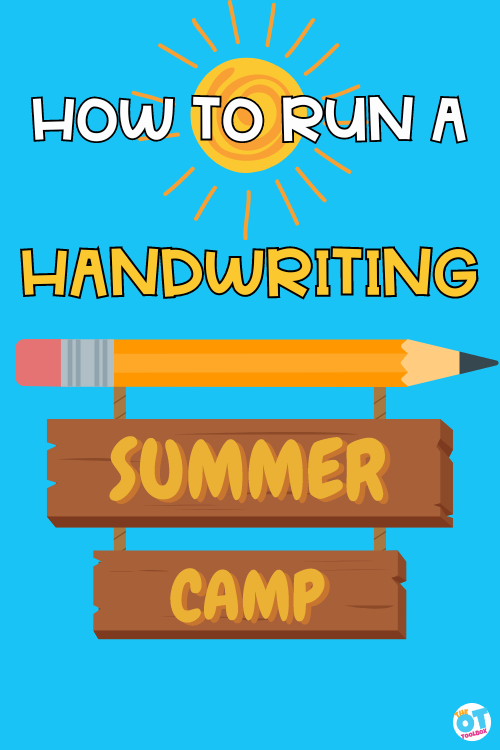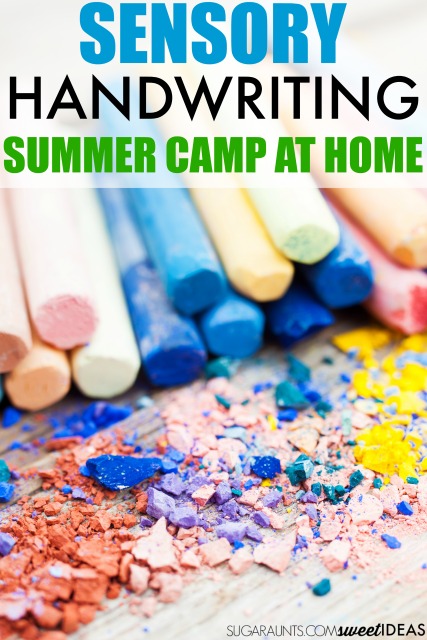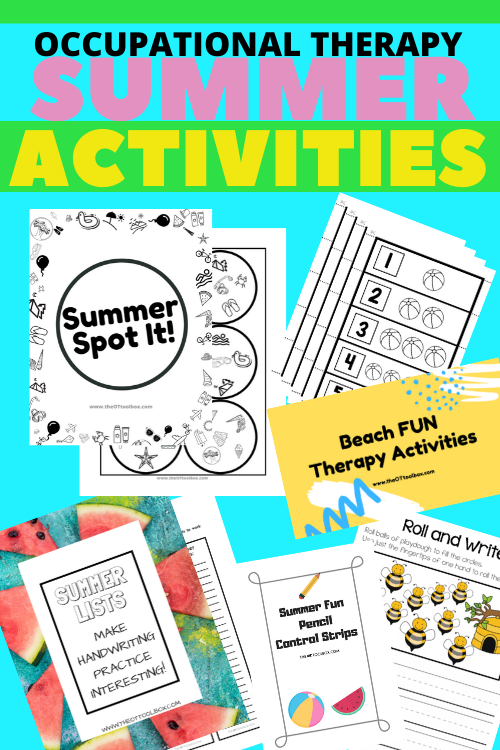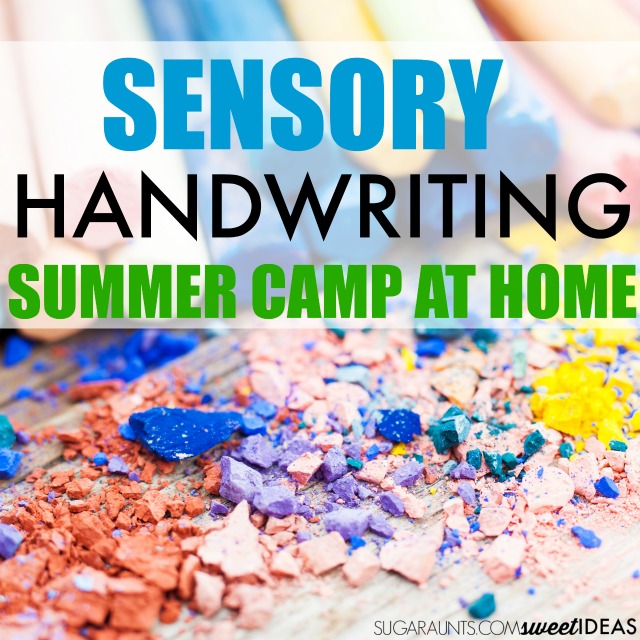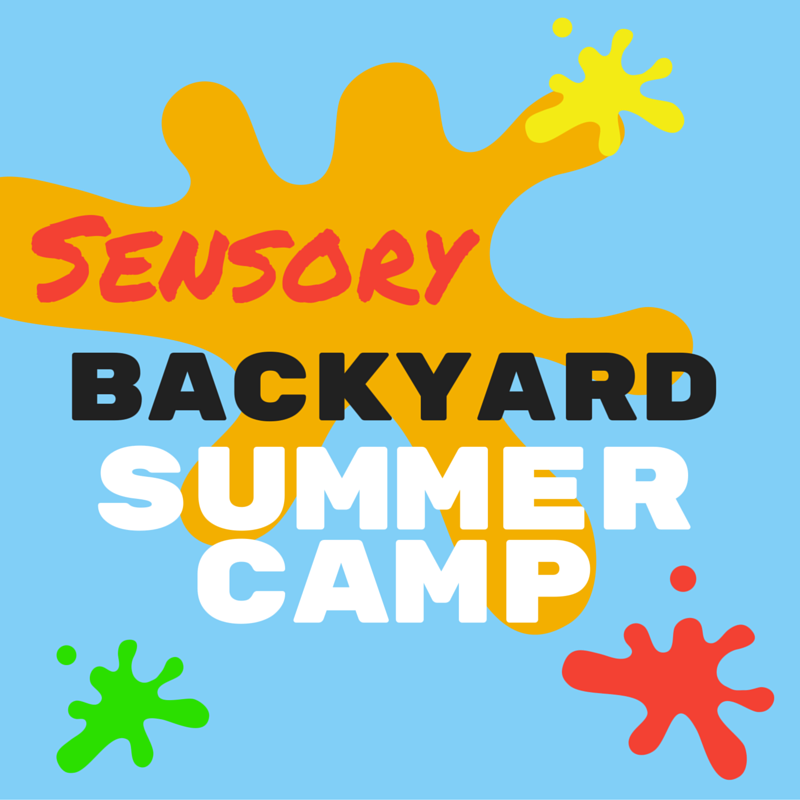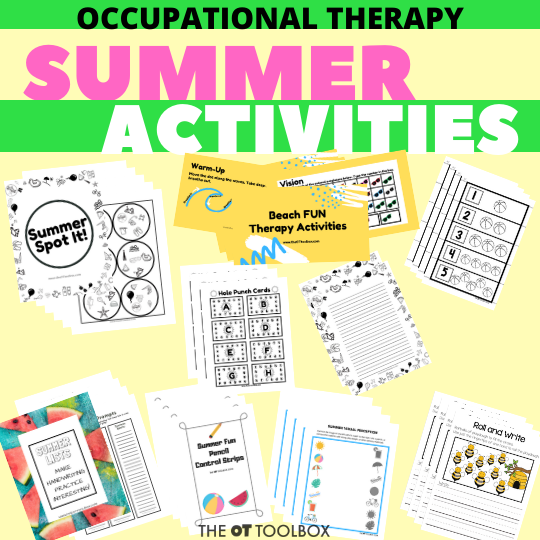A while back, I started putting together lists of activities that require just one supply. These are items that you probably already have in the home. I wanted to put these activity lists together to help kids work on fine motor skills with little to no supplies. Some of the activity lists that we have so far include fine motor activities using paper clips, activities using just craft pom poms or cotton balls, and activities to improve fine motor skills with just playing cards. I have a lot more activity lists to come. These will all use just one item, and the fine motor ideas are great for building skills with limited supplies. Send a copy of these links to any friends or families looking for activities for kids to do at home to work on fine motor skills. They are also great for adding to teletherapy services and working on skills with kids as the families probably have these simple items in their home.
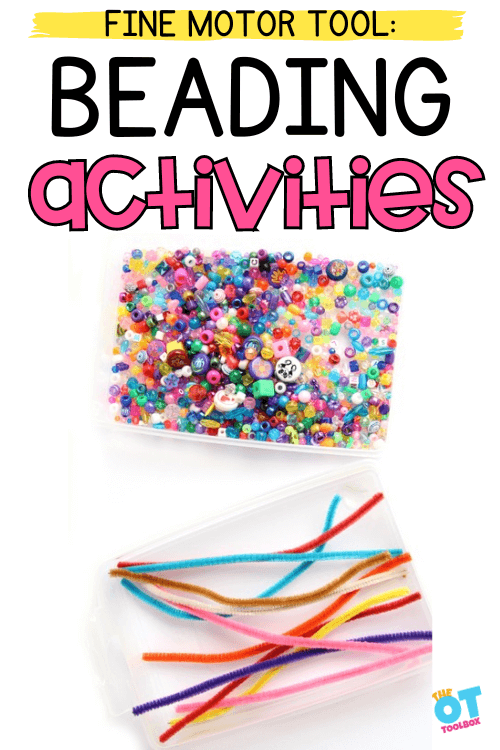
Having a small portable fine motor kit with beads and pipe cleaners can be a a great tool for supporting fine motor development. This is a great addition to the therapy bag for any school based OT.
stringing beads occupational therapy
Occupational therapy as a profession was centered around crafts at it’s roots. Historically, OTs used crafting as a tool to support physical and social emotional recovery. It’s fun to think about how stringing beads and occupational therapy is stull a very functional craft that supports skill development!
For example, check out our empathy activity that uses bead stringing!

For now, let’s talk about fine motor activities that can be done using just beads! HERE are all of our fine motor activities in one place.
FINE MOTOR ACTIVITIES KIDS NEED
Kids need fine motor skills for school and play. The problem is when we see functional concerns that limit independence. We might see kids who really struggle with hand strength, dexterity, joint mobility, or precision. We may notice these issues in how a student grasps their pencil. We may see kids having trouble with buttons, zippers, or snaps because of the fine motor skills they really need to develop. Simple fine motor activities can make a real impact in working on these fine motor skill areas.
Activities using what you have in the Home
Here are some of the other OT activity ideas that I’ve created so far in this series:
Activities using just a deck of playing cards
Activities using just craft pom poms or cotton balls
Activities using just paper clips
Fine Motor Activities using Beads
Now onto the fine motor activities that require just beads! Let’s talk about the WHY behind using beads as a fine motor tool in occupational therapy activities. There are several fine motor sill components that can be strengthened with beads.
Separation of the sides of the hand– Paperclips are the perfect small item to hold in the palm of the hand, engaging the ulnar side of the hand, while encouraging movement and precision with the pointer finger, middle finger, and thumb. This skill is so important for fine motor precision in tasks like pencil grasp and managing clothing fasteners or tying shoe laces.
Pincer grasp– Paper clips are a powerful means of promoting the precision grasp between the thumb and pointer finger. This motor skill is essential for tasks that require strength and dexterity to manage small items like coins or turning pages in isolation.
In-hand manipulation– Paperclips can be used as a manipulative item for transferring from the palm to the fingertips or vice versa. This is an essential skill needed in pencil grasp and other functional tasks.
Finger isolation– Paperclips can be used in various ways to promote finger isolation needed for fine motor dexterity and functional tasks.
Eye-hand coordination– This skills is an essential fine motor precision skill needed for so many functional tasks. Craft pom poms can be a powerful way to work on this skill area.
Visual Motor Skills- Coordinating visual information with motor movements of the hands is essential for handwriting, cutting with scissors, and many other tasks. Manipulating lacing cards is an excellent way to address these needs.
Read more about visual motor skills.
Motor Planning- A motor plan is functional execution of a task which is viewed with the eyes and carried out with the hands in order to complete tasks, such as mazes, walking around obstacles, cutting along a line, and writing within a space on a form. Visual motor skills can be difficult for children with visual processing difficulties. Identifying and organizing information is in a motor plan works on problem solving skills.
Read more about motor planning activities for kids.
What kind of beads help with fine motor skills?
This is pretty open-ended! Use what you’ve got on hand to really home in on the skills listed above. Some beads that would work include: pony beads, perler beads, pop beads, jewelry making beads, or even beads from an old necklace would work. The point is that you need small manipulatives that can fit into the palm of the hand and really challenge those fine motor skills.
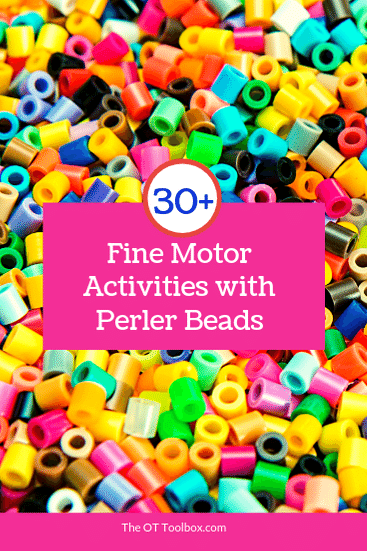
Use beads to work on fine motor skills in the following ways:
- Press beads into play dough
- Stick toothpicks into foam. Place beads onto toothpicks.
- Sort onto pipe cleaners by color
- Thread onto string
- Tape ribbons to an easel or wall. Slide beads up the ribbons from the bottom
- Place beads and hair gel in a gallon size bag. Tape the top. Move beads with fingertips.
- Drop beads into spice containers
- Drop beads into recycled water bottle
- Draw a large letter on paper and fill the lines with beads to form the letters. Use bubble writing to fill the space inside or place the beads right on the lines of the letter.
- Add beads to a marble maze
- Sort beads by color
- Copy patterns on play dough
- Place beads on shapes and lines
- Press beads into slime for a fine motor workout.
- Use beads as counters
- Create arrays with beads on cardstock
- Use letter beads to place on letters of spelling words
- Write letters on the sides of some beads like wooden ones that we used in this fine motor activity.
- Roll dice. Count out same number of beads
- Use other items to create beads like this foam curlers activity.
- Scoop and count beads into groups of ten
- Use tweezers to pick up beads
- Slide beads onto feathers
- Line up beads on a craft stick placed on a table surface
- Perler beads can be melted to create a pegboard like we did in a previous post.
More fine motor activities
- Benefits of Stickers in Occupational Therapy
- Neat Pincer Grasp Fine Motor Activity
- Buttoning Tips and Tricks
- Travel Sensory Diet Bag
- Hand Dominance and Fine Motor with Scooping and Pouring
- The Benefits of Coloring
- Clothes Pin Exercises and Pinch Grasp Types
- Homemade Pegboard Activities
Beading Activities
It’s not just about stringing beads on a pipe cleaner or string! You can work on other areas, too! Some ideas include:
- Work on patterns with the beads
- Copy a series of colors or bead types to work on visual motor skills
- Use a variety of bead types to encourage fine motor skill work
- Hide beads in theraputty and then use them to string the beads
These are just some of the ways to use beads in OT sessions! How do you incorporate bead activities?
Working on fine motor skills, visual perception, visual motor skills, sensory tolerance, handwriting, or scissor skills? Our Fine Motor Kits cover all of these areas and more.
Check out the seasonal Fine Motor Kits that kids love:






Or, grab one of our themed Fine Motor Kits to target skills with fun themes:
- Frogs Fine Motor Kit
- Unicorns Fine Motor Kit
- Vehicles Fine Motor Kit
- Apple Fine Motor Kit
- Back to School Kit
- Sports Fine Motor Kit
- Outer Space Fine Motor Kit
- Fairytale Fine Motor Kit
- Plus more in our shop!
Want access to all of these kits…and more being added each month? Join The OT Toolbox Member’s Club!

Colleen Beck, OTR/L has been an occupational therapist since 2000, working in school-based, hand therapy, outpatient peds, EI, and SNF. Colleen created The OT Toolbox to inspire therapists, teachers, and parents with easy and fun tools to help children thrive. Read her story about going from an OT making $3/hour (after paying for kids’ childcare) to a full-time OT resource creator for millions of readers. Want to collaborate? Send an email to contact@theottoolbox.com.

